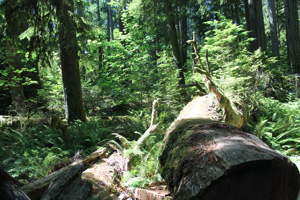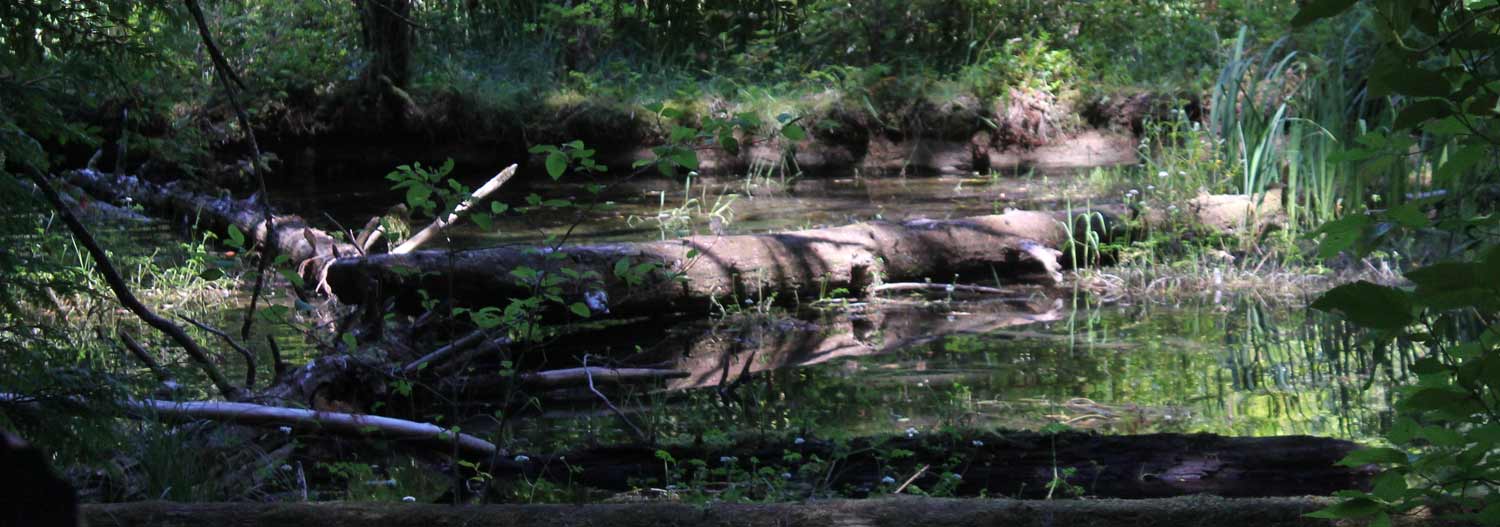Cathedral Grove is a stand of Douglas Fir and Red Cedar trees that are estimated to be from 350 to 800 years old.
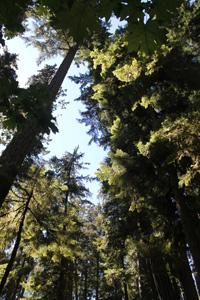

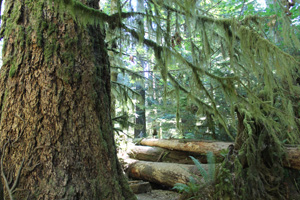 While many of the trees are enormous and obviously very ancient, it is also a living forest. There are areas where the old trees have died, or blown down due to high winds and there new growth appears, either on the forest floor or on the trunks of the dead trees. These trees are then called nurse trees and the new growth they foster can be trees of their own species or another. In Cathedral Grove much of the new growth is hemlock rather than the Douglas Fir or Western Red Cedar that was there before.
While many of the trees are enormous and obviously very ancient, it is also a living forest. There are areas where the old trees have died, or blown down due to high winds and there new growth appears, either on the forest floor or on the trunks of the dead trees. These trees are then called nurse trees and the new growth they foster can be trees of their own species or another. In Cathedral Grove much of the new growth is hemlock rather than the Douglas Fir or Western Red Cedar that was there before.
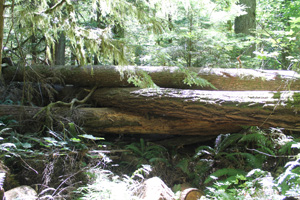
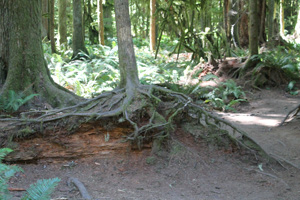
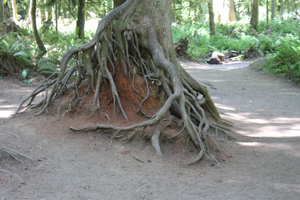 The Douglas Fir decompose more easily than the cedar. Their trunks absorb the rain and their fibers swell and soften, then break up and merge in with the soil. The Western Red Cedar take a much longer time to decompose and often last dozens of years without breaking down.
The Douglas Fir decompose more easily than the cedar. Their trunks absorb the rain and their fibers swell and soften, then break up and merge in with the soil. The Western Red Cedar take a much longer time to decompose and often last dozens of years without breaking down.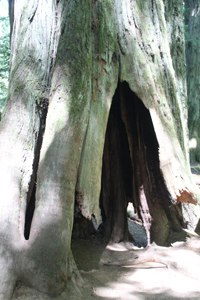
Both the Douglas Fir and Western Red Cedar are an important part of the BC forest industry and the Red Cedar was a key component in the West Coast First Nations culture.
I think any trip to the Parksville area or further on to Pacific Rim should include a visit to Cathedral Grove, so I am quite sure that Christy would want to bring Noelle here and that the rest of the group will probably come too. As to what will happen here? Well, not sure of that yet, but something will!
